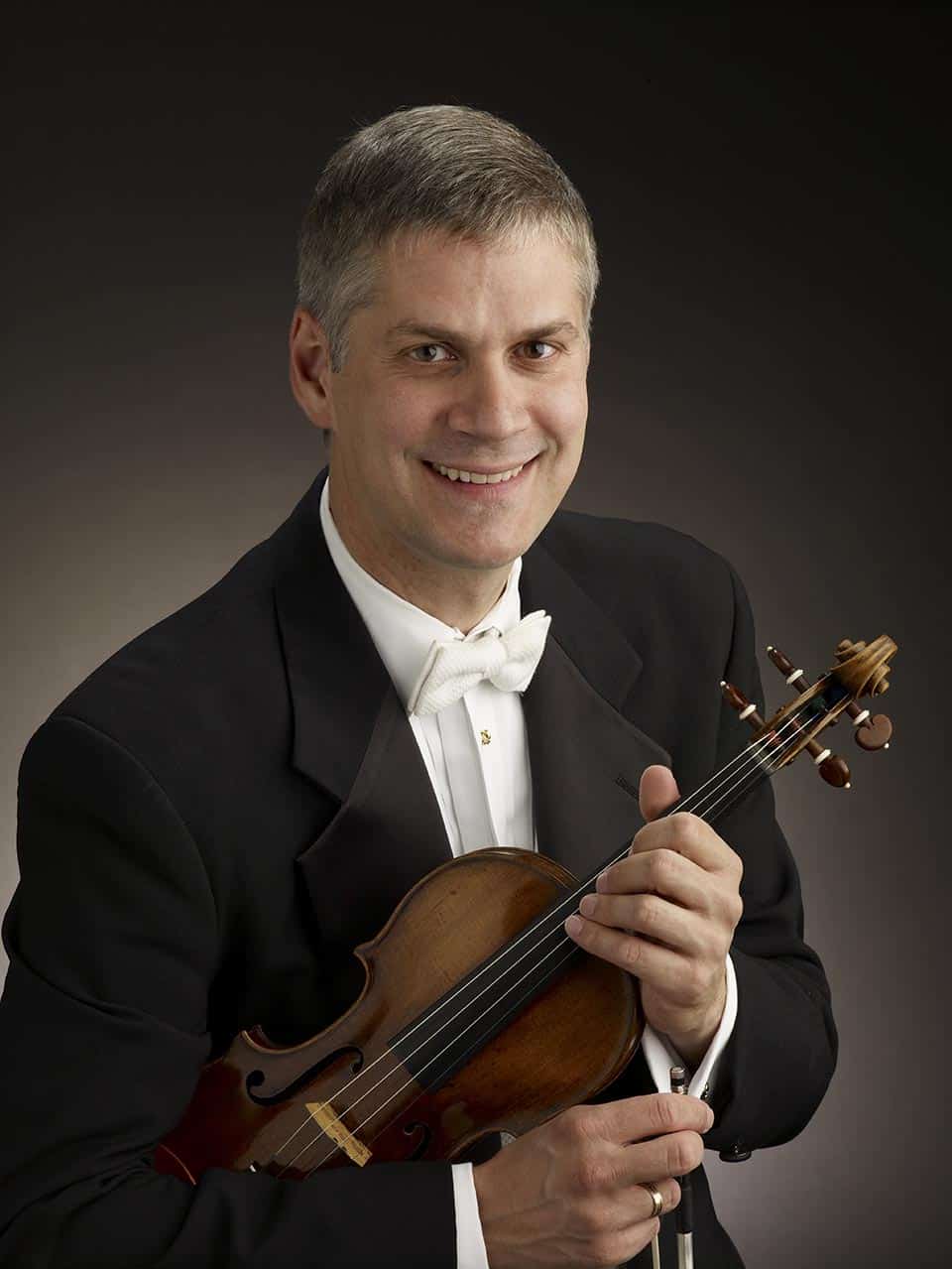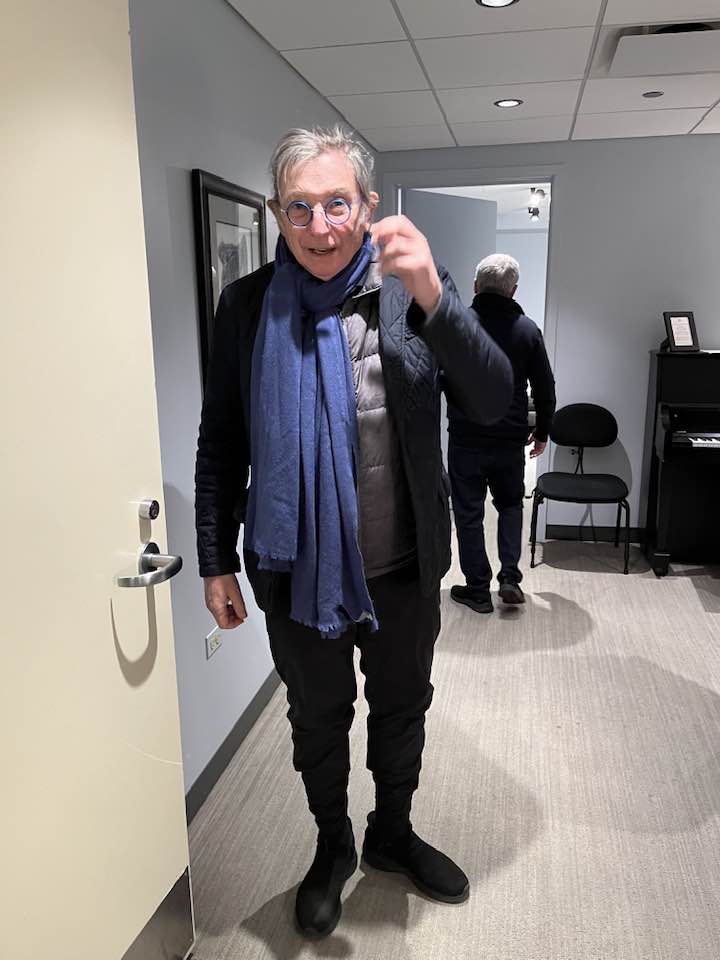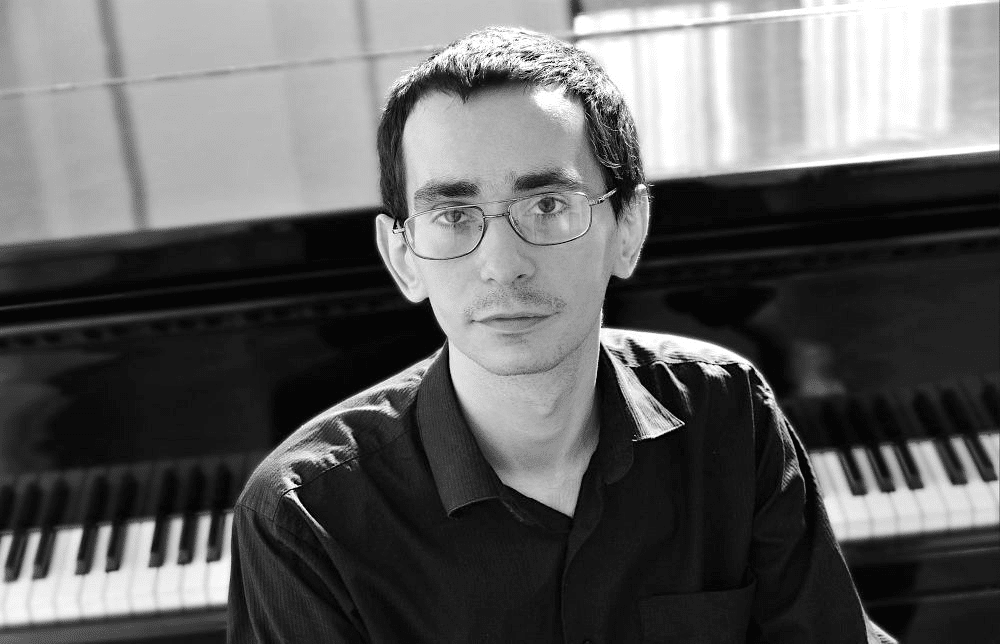Frans Brüggen, as seen by his fellow-pioneers
main
This 1985 essay is excerpted from the book Reprise: The Extraordinary Revival of Early Music, with text by Joel Cohen and photos by Herb Snitzer
Of all the melody instruments, the most important during the seventeenth and eighteenth centuries was unquestionably the violin; the transverse flute trailed forlornly at a distant second place. Yet the first modern superstar to emerge from the early music ranks was neither a violinist nor (primarily) a traverso player. His instrument was the one favored by countless thousands of early music enthusiasts — the recorder. He was a Dutchman named Frans Brüggen (b. 1934).
His enormous public success surpassed anything previously conferred on an early instrument specialist (except perhaps for harpsichordist Wanda Landowska two generations earlier). Brüggen’s public included, but went far beyond, the relatively restrained coterie of the early music faithful. No one ever threatened to make Gustav Leonhardt or Sigiswald Kuijken into a matinee idol; but around 1968 Telefunken, which was releasing solo recitals by Brüggen on a regular basis, began packaging a poster-size photograph of their star with some of his [LP] albums. The handsome virtuoso, heavy-lidded and weary of this mortal frame, gazed out from the photo, past the solicitations of his adoring fans, toward some profound and mysteriously burdensome Unknown. Large numbers of artistic and sensitive young ladies affixed the poster to their bedroom walls.
The recorder was one of the first obsolete instruments to be revived in modern times. This unpromising stick of wood has also been known as the blockflöte, flute a bec, or occasionally just plain flute. It has shared a long history with its sister instrument, the transverse flute (also known as the flauto traverso, flute allemande, German flute, or occasionally just plain flute). But the transverse flute, despite numerous transformations of its manufacture across the centuries (or rather because of them), never went out of style. The modern orchestral flute, many-keyed and silver-bright, descends in a straight line from the wooden traversi of earlier centuries.
The recorder has no comparable place in modern concert life. Its decline and fall had to do perhaps with its somewhat intractable nature. Unlike the transverse flute, which allows its players many kinds of nuances and tonal colors, a recorder has basically only two aural states, sound and silence, on and off—something like the switches inside a computer chip and about equally supple and humane.

FB, painted by Norman Perryman (c) Perryman/Lebrecht Music&Arts
And yet, the recorder was counted among the instruments of seduction by the painters of the Italian Renaissance. Many a sixteenth-century painting of a bacchanal contains a symbolic recorder (along with other things meant to signify pleasure) somewhere within its frame. Frans Brüggen revived that seductiveness by indeed playing the instrument, rather than merely brandishing it like some Venetian cupid; and in so doing he managed to rouse his audiences to heights of enthusiasm rarely seen in the calm, contemplative circles of the musical antiquarians.
Long legs nonchalantly crossed, holding the recorder at an odd and slightly defiant angle to his mouth, Brüggen would treat the Telemann sonatas, favorites of the amateur player crowd, to the most astonishing kinds of metamorphoses. Abjuring the ticky-tocky style popular with Baroque performers in the recently elapsed fifties, Brüggen coaxed nuances and shadings from his instrument that few would have imagined possible heretofore. A hundred kinds of instrumental attacks, a thousand kinds of ways to shape a group of notes together, seemed to issue forth from the recorder’s narrow bore. Nothing stood still or grew stolid: in the fast movements, Brüggen’s incredible technique allowed sixteenth notes to cascade into the hall at breakneck speed. In slower passages, the sustained notes would rise disquietingly from the correct pitch, touch a point about a quarter-tone above the center, and sink back again. The little whistle heaved and sighed like a wood nymph in the embrace of some ardent faun.
The Brüggen maniera quickly revolutionized the teaching and playing of the recorder and its music, and not always for the better. Scores of young, aspiring virtuosi took to sticking the recorder at unusual angles to their faces and to playing every long note with a roller-coaster swell in the middle. Controversies flamed at weekend recorder workshops as to whether the celebrated hallmarks of the Brüggen playing style were truly founded in Baroque performance practice. Frans Brüggen himself defended many of his ways from the august podium of a visiting professorship at Harvard. There (and elsewhere) he was able to explain that many of the seemingly audacious things he did with a recorder were simply the application of precepts from seventeenth- and eighteenth-century performance treatises.
But like every good artist, Brüggen applied the basic precepts his own way. The spirit of contradiction coursed hot within his veins, and so he took every possible clue from the old manuals which would enable him to build a performing style that would be different from the Dolmetsch workshops, different from the Amsterdam conservatory, different from the polite, isn’t-it-nice-weather-we’re-having manner of the official chamber orchestras. Different!
Ironically, his originality spawned a host of Frans clones just a few years later. It is flattering for any performer to realize that he is the object of imitation and emulation. For someone with Brüggen’s rebellious and individualistic temperament it must have been infuriating as well.
Controversies and camp-followers notwithstanding, the Brüggen legacy has permanently transformed and deepened our understanding of the recorder and its literature. It had been too easy, even for those who loved early music, to consign the recorder to the slag-heap of music history. The instrument’s peculiar overtone structure and limited dynamic range made it seem more often than not just plain inadequate for the transmission of serious musical thought. By developing the inherent technical possibilities of the recorder to their maximum, and by applying a superior musical intelligence to every tiny detail of performance practice, Brüggen showed us that recorder playing could be as stimulating and rewarding an activity as anything else, and not just for the performer. And he proved that there is really no such thing as an “inferior” instrument; there are only players without enough imagination.
Brüggen’s keen sense of opposition and contradiction led him to many of his important discoveries in the field of recorder technique. Those same character traits also led him to question many other idées reçues of the musical order. He became interested in avant-garde contemporary music, and cultivated friendships with some eminent contemporary composers; one day, during his Baroque seminar at Harvard [with this writer in attendance], he taunted his students by playing the solo piece that avant-garde composer Luciano Berio had written for him, and defying his listeners to pick out the mistakes he was deliberately inserting in Berio’s hard-to-read score. His involvement with the Dutch counterculture movement led to some unusual moments during his recitals: at a [Boston] concert with the trio Sour Cream (Brüggen plus two of his student-colleagues, Kees Boeke and Walter van Hauwe), the last piece featured a Keystone-Kops chase around the concert stage.
A season or two later, the same trio performed again in Boston more determined than ever to épater les bourgeois. While Kees and Walter played Telemann duos, Brüggen wandered onto the Jordan Hall stage, donned a pair of dark sunglasses, stretched himself out on a chaise longue, and nonchalantly began reading a copy of the daily newspaper. The event provoked an indignant editorial from the Boston Globe a couple of days later. At least some members of the educated classes, who often brush their teeth in the morning to the strains of canned Vivaldi, had failed to get the satirical point. Les bourgeois — or some of them, at any rate — were not amused.
Brüggen himself seemed less and less amused by the idea of giving solo recitals on the recorder. He still commands astronomical fees for those appearances, but nowadays [mid 1980’s] his heart and soul are elsewhere. Some of his colleagues view Brüggen’s recent activity as a conductor with a measure of mistrust. The recorder virtuoso’s decision to found (and even in part to autofinance) his own orchestra was greeted in some quarters with the skeptical jeers accorded Secretary of State William Seward as he arranged to purchase Alaska from the Russians.
As it turned out, both the Alaska purchase and the Orchestra of the Eighteenth Century (as Brüggen has named it) were worthwhile undertakings, despite the forbidding scale of each. The new orchestra, as its name suggests, is intended for the performance of pre-classical and classical period music. Like many Baroque specialists, Brüggen has become increasingly drawn to the style period just following the one he originally specialized in. The orchestra plays Rameau, Mozart, and even early Beethoven, applying to those later masters the same kinds of approaches that worked so well with Lully and Vivaldi and Bach. The instrumentalists have been recruited from the first ranks of the younger Baroque players; their instruments replicate those in use at the end of the eighteenth century; and the playing style is derived in large part from our historical knowledge about orchestras of that period. More important (and here is the main difference between this orchestra and certain others that have delved into the Mozart-Haydn repertoire with period instruments), the performances are strongly personal statements about the music rather than efficient sight-readings. It is now possible, given the increasing professionalism of early music players, to rehearse Mozart’s Jupiter Symphony in the morning and produce a technically adequate disk recording in the afternoon. That surface approach cannot, however, do justice to the “inside” of a genuine musical masterpiece like the Jupiter. Too many important things must be left undiscussed and undecided.
Brüggen’s current performances reflect a lot of hard work on a myriad of small details: tone color, balances, the articulation of individual notes in inner voices. The result, though, is anything but dry and pedagogical. Familiar works (like the late Mozart symphonies) seem to come alive again, revealing themselves as though for the first time. Hearing that music with this ensemble is something like seeing a familiar Old Master painting on its return from a thorough cleaning and restoration. Colors that had been dimmed and dulled by layers of grit and varnish can now reappear with their true intensity and expressive impact. We are now hearing many “early music” performances of Mozart and Haydn (Beethoven and Schubert as well), offered by people who apprenticed first in Baroque music. Frans Brüggen’s experiments in this direction must be counted among the most satisfying of the lot.
Brüggen’s success with Mozart depends on those same personal qualities that were evident in his recorder playing: the refusal to take anything for granted, the willingness to take risks, and the untiring search for solutions that probe beyond convention and lazy self-evidence.
We have noted earlier [in the book] that the decision to make one’s life in early music has as much to do with the present as it does with the past. Nowhere is that more evident than in Frans Brüggen’s career. Restless, dissatisfied, probingly intelligent, he has consistently refused to play by the established rules. His search for other precepts and other principles came from an inner need to do things his own way. The music of the distant past has been a means toward a personal end. Frans Brüggen the surgeon would have invented an outlandish but brilliantly successful technique to transplant some obscure but necessary vital organ. Frans Brüggen the auto mechanic would probably have set about redesigning the internal combustion engine, just to show the world how badly it had been done in the first place. It was a loss to the hospitals and the garages of this planet, but we music lovers can be glad: young Frans picked up neither a scalpel nor a monkey wrench as his tool for getting even with the world’s dullards, but a Baroque recorder.
Joel Cohen, a trailblazer in the early music field, led the Boston Camerata from 1969 to 2008. He is currently Artistic Director of the Camerata Mediterranea.





I heard Sour Cream in San Francisco in the late 70s or early 80s. The virtuosity, tight ensemble playing, and musicality were jaw-dropping. Everyone in the audience went wild and the trio could hardly leave the stage to go home!
Frans Bruggen was a true great, that’s for sure. He will be sorely missed.